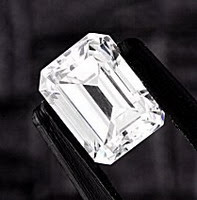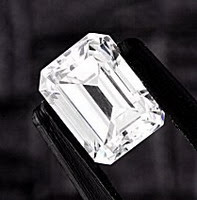Wednesday, February 11, 2009
Colored Diamonds
 Fancy colored diamonds are all the rage these days. Gemologists have developed
Fancy colored diamonds are all the rage these days. Gemologists have developed new ways to create versions that are affordable for the average person - by treating less desirable diamonds. These less desirable diamonds are treated with irradiation followed by intense heat. This turns brown and yellowish diamonds into beautifully colored diamonds that you can afford. This produces stunning greens, blues, yellows, reds, purples and other colors. These colors are considered permanent, but there is a possibility they could change during repairs if a high heat is used.
Treatments like irradiation make it possible for more people to own these vividly colored diamonds. Most natural colored diamonds are rare and also extremely expensive. When shopping for colored diamonds you need to assume that any affordable fancy color diamond has been treated. Ask about the stones origin and request to view a lab certificate to verify authenticity.
Synthetic colored diamonds are another option if owning a colored diamond is
something you desire but cannot quite afford. They are real diamonds, but they are created in a lab.
Natural fancy color diamonds get their coloring from different trace elements present
in the stones, such as nitrogen, which produces a yellow diamond. Diamonds can
be colored by exposure to radiation during its creation. An example of a diamond affected by radiation is a Green diamond.
Another way that a natural colored diamond gets color is by its inclusions. Regarded as flaws and undesirable in a colorless diamond, inclusions give unique tones and brilliant flashes of color in a fancy color diamond. Remember that Natural fancy colored diamonds are very expensive, any colored diamond labeled to be sold as natural should be accompanied by a certificate from a respected grading lab.
A "fancy" diamond is a natural diamond that has color. These colors vary from red, green, purple, violet, orange, blue and pink – and most shades between. Fancy color shades vary from faint to intense.
The most famous diamonds in the world are Color diamonds. The Tiffany Diamond,
which is yellow and the Hope Diamond which is blue are colored diamonds. Color
diamonds have an amazing financial track record. The value has never decreased on
wholesale level in more than 30 years. Blue and pink diamonds have doubled every 5
years of a strong economy. In the 1970’s you could have bought a very high quality
blue diamond for about 50K and today the very same stone would be worth between 2 and 3 million.
Labels: Colored Diamonds


